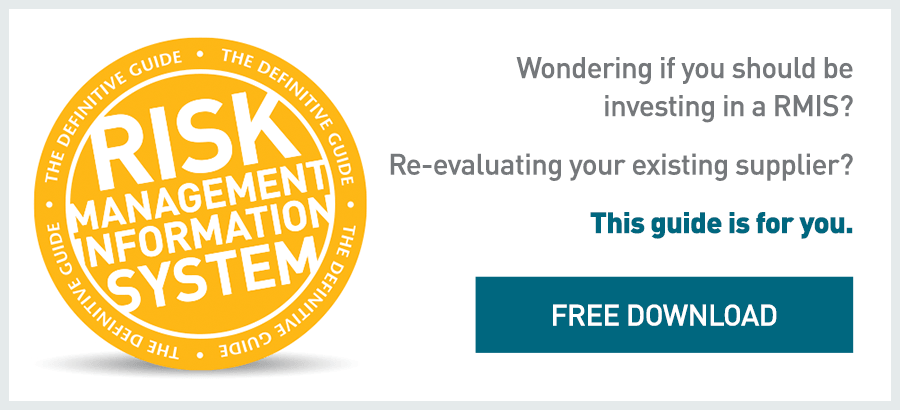 American statistician, professor, author and genius of data and method, W.E. Deming, wrote: “In God we trust; all others must bring data.” What he failed to mention was that you should bring relevant data and organize it correctly for the benefit of others. There is no insightful information without organized data.
American statistician, professor, author and genius of data and method, W.E. Deming, wrote: “In God we trust; all others must bring data.” What he failed to mention was that you should bring relevant data and organize it correctly for the benefit of others. There is no insightful information without organized data.
It’s easy to understand the benefits of data when it comes to assessing risk, but being able to collect, consolidate, verify and analyze renewal data, in an efficient and effective way, is an entirely different story. A risk management information system (RMIS), like RiskConsole, can help risk management teams successfully manage the annual process of collecting renewal data.
Clear and accurate data about risk and exposure helps:
- Ensure compliance with acts of disclosure.
- Actuaries to make more accurate projections.
- Brokers to design an optimal insurance program.
- Underwriters to price accurately.
- Avoid claims settlement processes.
The sheer volume of data being asked for by insurers has increased massively over recent years. With current natural catastrophesand political unrest fresh in our minds and across the globe, it is likely that the amount of data being asked for will increase even further, resulting in a volume of data which can rapidly and easily add up to hundreds, if not thousands of assets.
Risk and insurance team members using basic spreadsheets to collect, consolidate and check this volume of data will feel the strain. It is tough and time consuming. Moreover, given the sheer volume of data across a number of spreadsheets, it's regularly prone to error.
One of the key challenges when completing renewal-data collection using spreadsheets and paper-based forms is that exposure data (the measure of vulnerability to loss) ends up being held in lots of different places, all of which then need to be manually consolidated and checked. This is a time-consuming process that brings with it potential security issues. Ultimately, this type of data collection often results in operational inefficiencies and data errors.
Not all over the place, but in one place
There are six key benefits to using risk management software for renewal data collection:
- All in one system approach.
- Improved data quality.
- Reduced time and effort.
- Comprehensive data capture.
- Enhanced process evolution.
- Complete audit trails.
RMIS software removes collection, storage and analysis vulnerabilities by enabling data to be entered and stored in one secure system. In other words, no more manual consolidation of data. To this end, all authorized personnel can instantly access live data at any time and get a complete picture of the organization’s exposures.
Another benefit of housing renewal data in one system is that the renewal processes can be standardized and any changes can be quickly and efficiently communicated from within the system. A good RMIS will highlight to the respondent any changes from the prior year’s values, so that information can be quickly checked, and if needed, amended.
Collecting and analyzing any type of data is no small undertaking, and organizations collecting and analyzing risk and exposure data will know how valuable the accuracy and depth of that data is to their business. For those organizations that have invested time and budget to replace spreadsheets with a risk management information system to complete the renewal data collection process, the benefits have been considerable.
Underwriters typically receive fewer than half of the data elements needed to use their pricing models to the full extent. In addition, if the data is not provided, then the likely outcome will be a higher premium; this is because underwriters still have to price for the unknown. By allowing underwriters to "know more," premiums can be dramatically reduced as all exposure data is accounted for and compiled correctly and efficiently.
Standardizing the data-collection process delivers considerable time savings and produces higher-quality data. The potency of this mix allows the risk management team and broker to spend more time analyzing exposure data and designing optimal insurance programs, creating better results, better premiums and better advice.
Joe Fitzpatrick is Director of Commercialization with the Aon eSolutions Global Product Management team. Joe works in the Atlanta Aon eSolutions office and can be reached at joe.fitzpatrick@aon.com or by phone at 770-308-5446.








 American statistician, professor, author and genius of data and method, W.E. Deming, wrote: “In God we trust; all others must bring data.” What he failed to mention was that you should bring relevant data and organize it correctly for the benefit of others. There is no insightful information without organized data.
American statistician, professor, author and genius of data and method, W.E. Deming, wrote: “In God we trust; all others must bring data.” What he failed to mention was that you should bring relevant data and organize it correctly for the benefit of others. There is no insightful information without organized data. 



